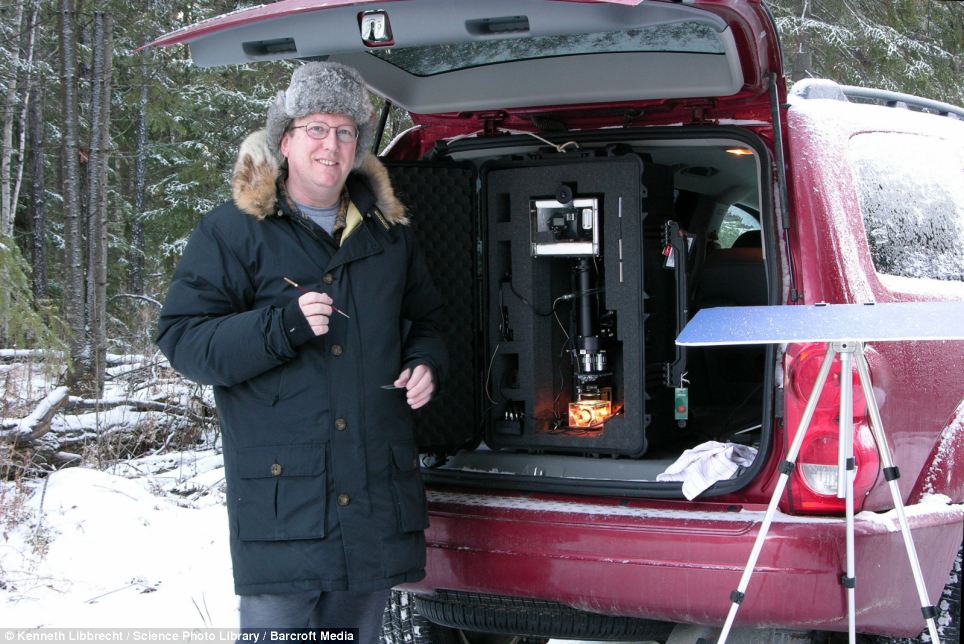
We are often told that every snowflake is different – but the naked eye is simply not advanced enough to appreciate the world’s favourite form of precipitation.
But even without a white Christmas this year, we are able to fully explore the complexity of the water molecules that make up snowflakes thanks to an American scientist and his fascination with the white stuff.
Kenneth Libbrecht, a Professor of Physics at the California Institute of Technology, has been studying snowflakes, ice patterns, crystal growth and ice formations since 1997.
Using a specially designed photo-microscope called the SnowMaster 9000, the 53-year-old braves subzero temperatures to catch falling snow flakes, photographing them before they melt.
Placing the snowflake underneath the microscope, he illuminates the snowflake with coloured lights.
These pictures show real snow crystals that fell to earth in Northern Ontario, Alaska, Vermont, the Michigan Upper Peninsula and the Sierra Nevada mountains of California.
The professor was first inspired to capture snowflakes after realising that they had never been captured in a way that intrigued him.
He said: ‘When I first began toying with the idea of writing a book about snowflakes, I found that there weren’t any really nice pictures out there.
‘The state-of-the-art in snowflake photography was not what it could have been.
‘This was an opportunity, so I set out to design and build a photo-microscope that was optimised for taking pictures of snowflakes.’
Mr Libbrecht soon found that he would have to overcome a number of challenges to acquire the images he desired.
‘There are a number of challenges in photographing snowflakes. The crystals are small, so the usual techniques of macro photography don’t work well; what you need is essentially a high-quality, low-power microscope.
‘In addition, the equipment must be robust enough to work outside, and it has to withstand sub-freezing temperatures. Finally, to take good pictures, you have to take a lot of pictures. Therefore, I wanted my hardware to be easy to set up and use.’
Snow flakes form when a cloud droplet first freezes into a tiny particle of ice. As water vapour starts condensing on its surface, the ice particle quickly develops facets, which form into different shaped snowflakes depending on temperature.
Whilst scientists differ on the classifications of snowflakes, the scientist has identified 35 different types of formations.
These include Stellar Dentrites, plate-like snow crystals that have branches and sidebranches, which are typically 2-4 mm in diameter.
Stellar Plates or ‘common snowflakes’ are thin, plate-like crystals with six broad arms that form a star-like shape, forming when the temperature is near -2 C (28 F) or near -15 C (5 F).
Others like Fernlike Stellar Dentrites are the largest snow crystals, often falling to earth with diameters of 5mm or more.
Building the specially designed SnowMaster 9000, a microscope and Nikon D1X digital camera contained in a heated enclosure, Mr Libbrecht was able to get the desired results.
‘The camera itself is housed in a heated enclosure, white styrofoam box, so that it can stay outside in the cold indefinitely,’ he explains.
‘The snowflake is placed on a platform attached to a translation stage for focusing.
‘As is typical for microscopes, it is more convenient to move the subject than to move the lens. I attached a flexible shaft and a large knob to the stage, making it easier to focus with cold fingers.’
To highlight the snowflake’s dimensions and qualities, Mr Libbrecht uses illumination techniques from a variety of colour filters for different effects.
‘Snow crystals are made of ice, which is clear and colourless. I like to illuminate the crystals with coloured lights from behind, using the optical layout shown above.
‘The snow crystal then acts like a complex lens that refracts the different colours in different directions, producing a variety of colourful effects.
‘To illuminate the crystals, I use a lamp mounted below them. Above the lamp is a heat-rejection filter and a piece of ground glass and on top of those components I can place any of a number of colour filters. The field lens focuses the colour filter onto the microscope objective.’
Kenneth’s amazing images have allowed him to further his study of of crystal formations and apply them to a number of industries – particularly manufacturing.
‘There are several good reasons for studying how snowflakes form. First of all, crystals are useful in all sorts of applications, and we would like to know how to grow them better. By studying the physics of snowflakes, we learn about how molecules condense to form crystals.
‘Another good reason to study snowflakes is to better understand structure formation and self-assembly. The snowflake is an very simple example of self-assembly.
‘There is no blueprint or genetic code that guides the growth of a snowflake, yet marvellously complex structures appear, quite literally out of thin air.
‘As we understand better how snowflakes form, we learn about self-assembly. As the electronics industry pushes toward ever smaller devices, it is likely that self-assembly will play an increasingly important role in manufacturing.’
But the scientist says that his study of snowflakes is the pursuit of understanding basic science.
‘My personal motivation is not from potential practical applications. I am not trying to make better artificial snow, better ice for Olympic skating, bigger diamonds, faster computers, or anything like that,’ he said.
‘I want to figure out the underlying physics of snowflake growth because this is an interesting puzzle in molecular dynamics. I would like to understand the fundamental physics of how molecules jostle into place to form a crystal.
‘How fast does this happen? How does it change with temperature? What happens if there are chemical impurities on the ice surface? These remarkable structures simply fall from the sky – we ought to understand how they are formed.’
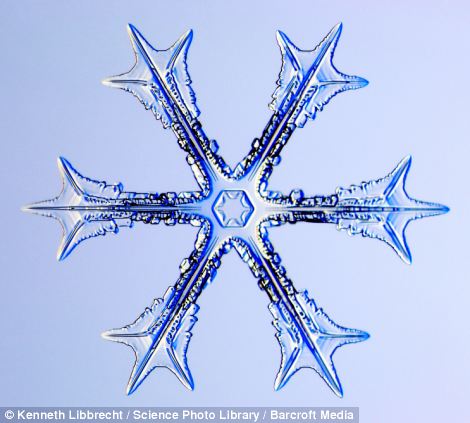
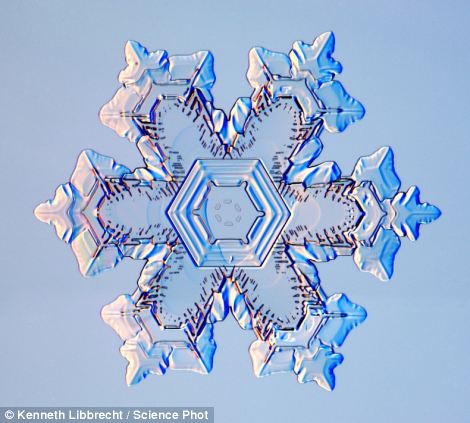
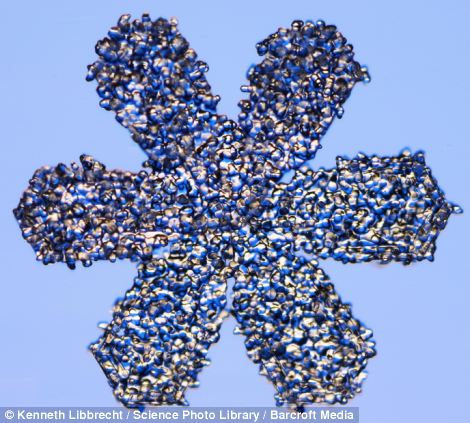
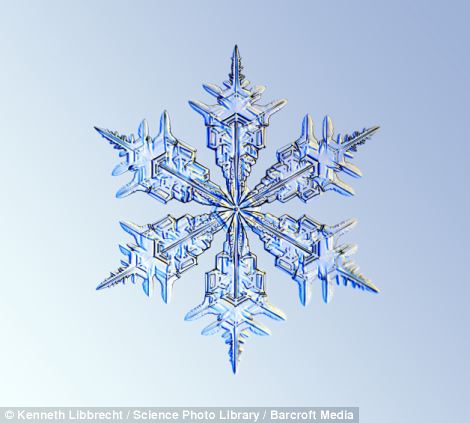
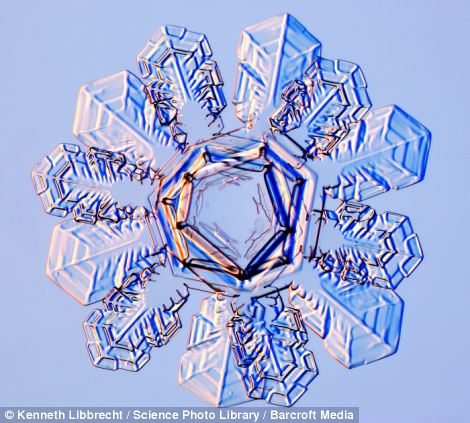
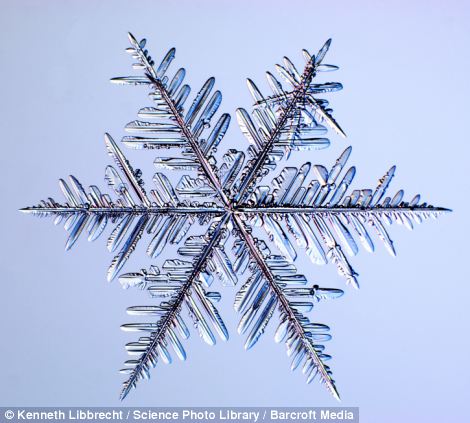
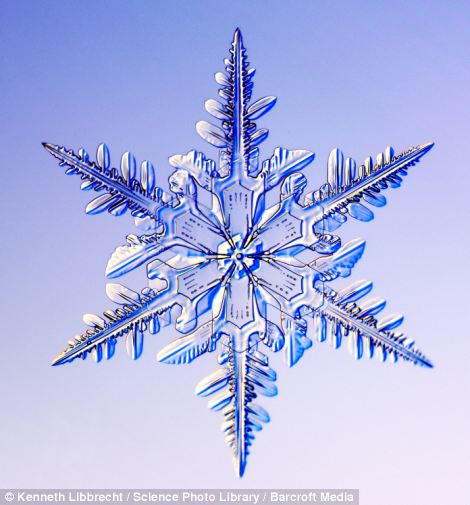
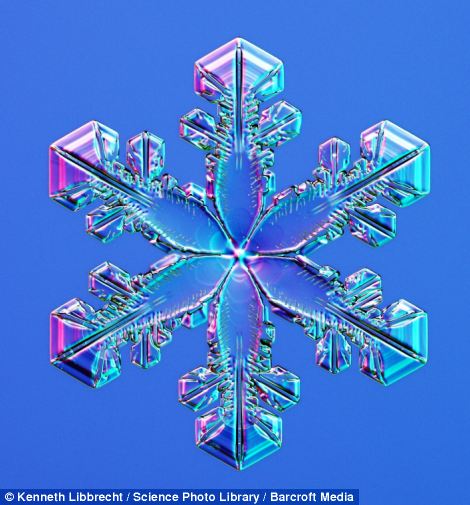
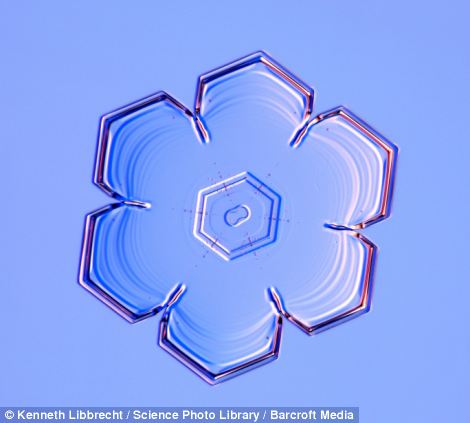
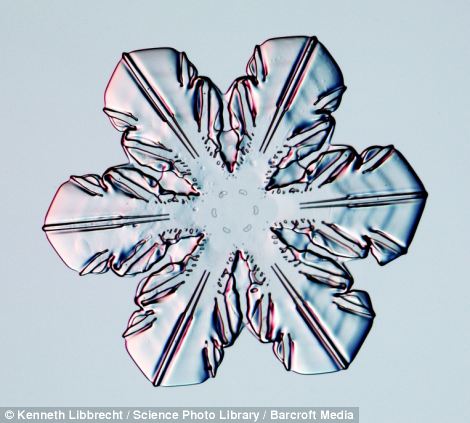
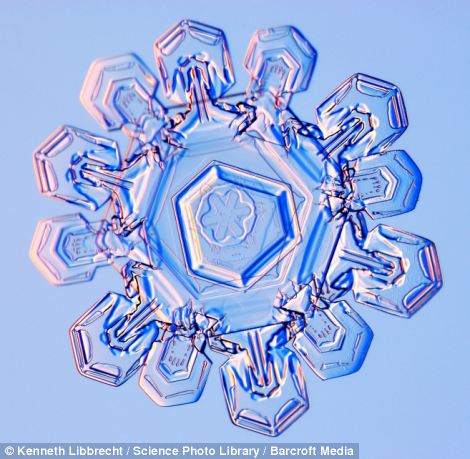
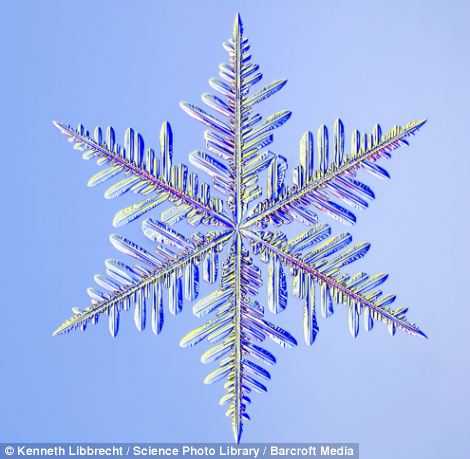
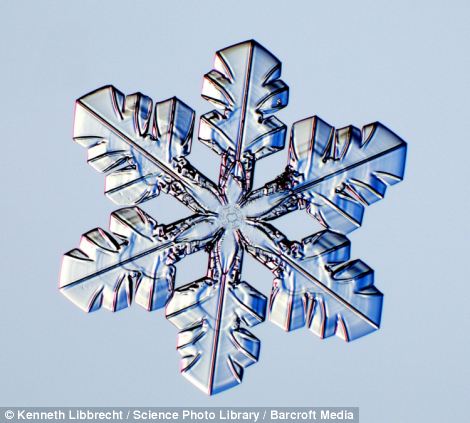
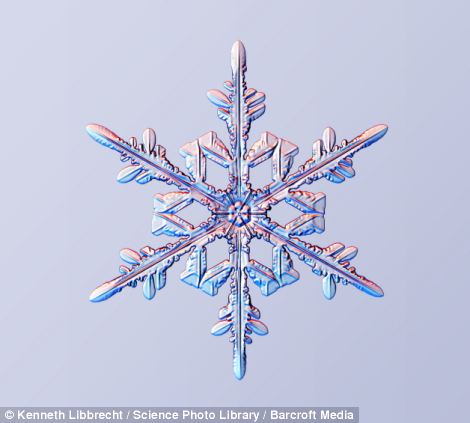
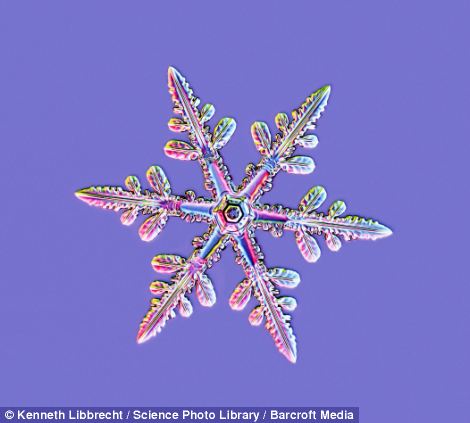
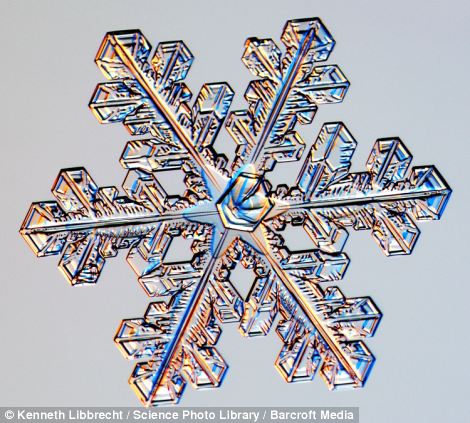
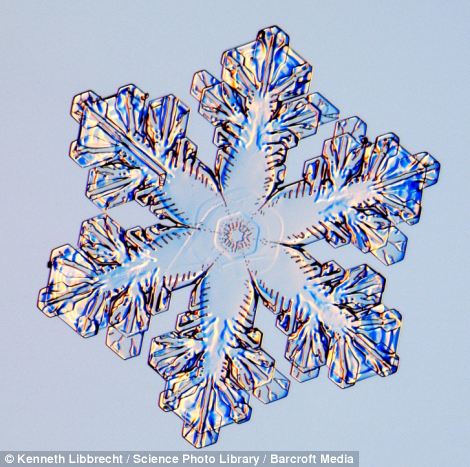
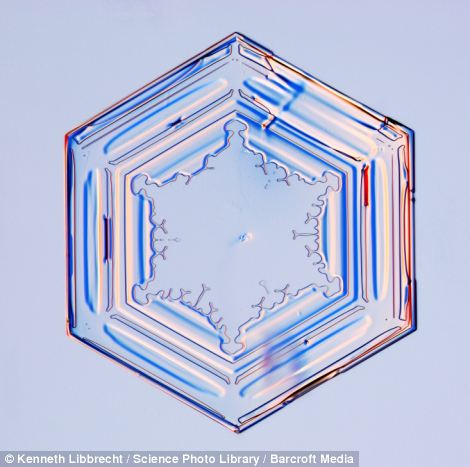
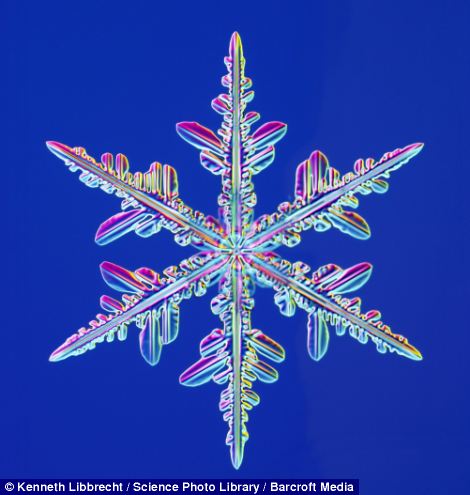
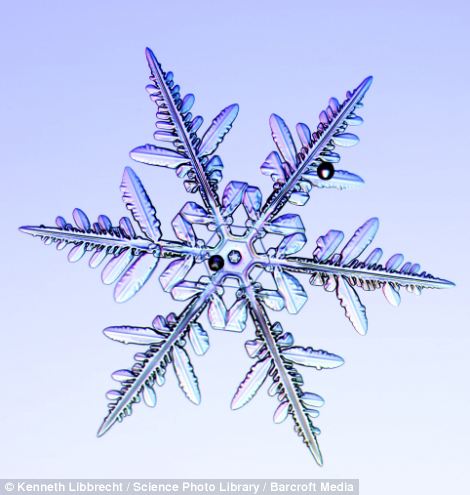
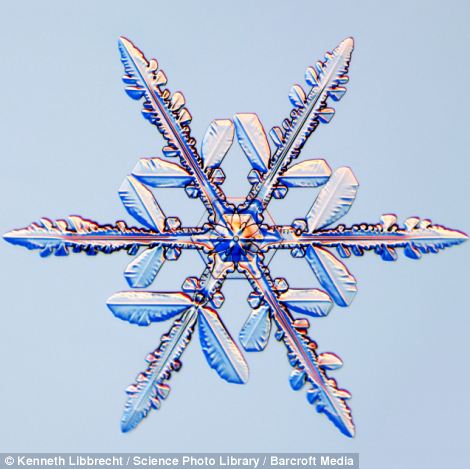
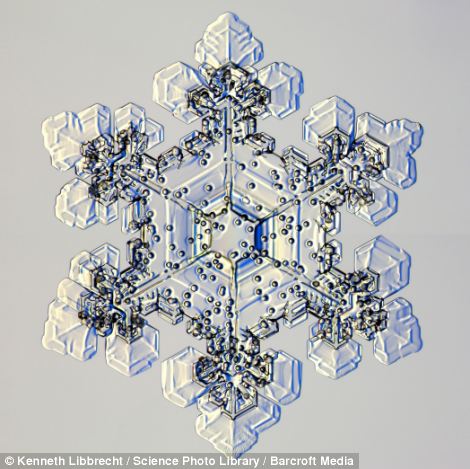
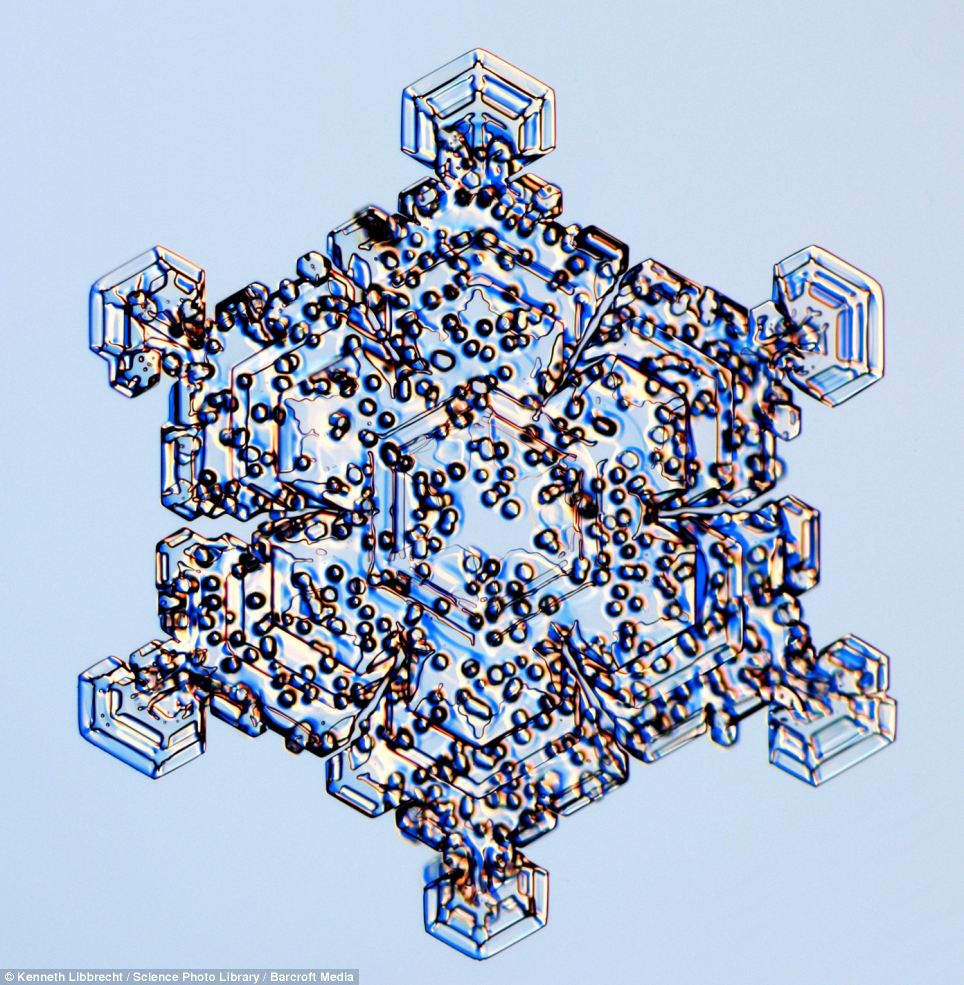
RELATED ARTICLES
- Australia says COVID-19 is back, Tells Citizens to Get more Vaccine Doses
- Harvard University Top Donor Stops Donations, Says Elite Schools Produce 'Whiny Snowflakes'
- Ukraine Blows Up Russian Landing Warship in Crimea on Christmas Day
- Refugee camp struck in Gaza on Christmas Day, 70 Dead
- Germany: Baby Jesus beheaded along with other Nativity figures in latest attack on Christians











